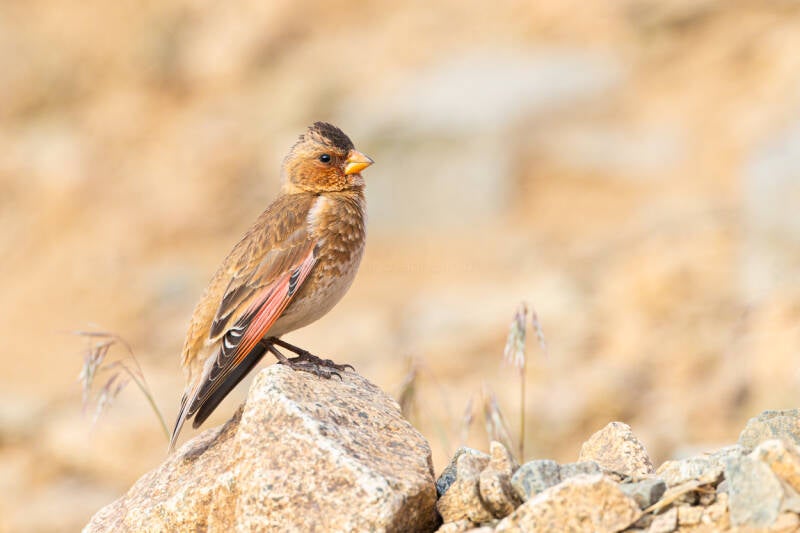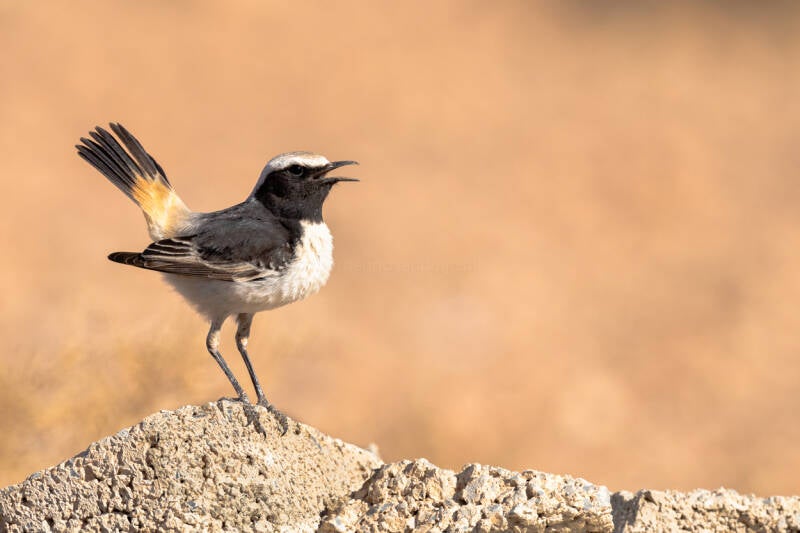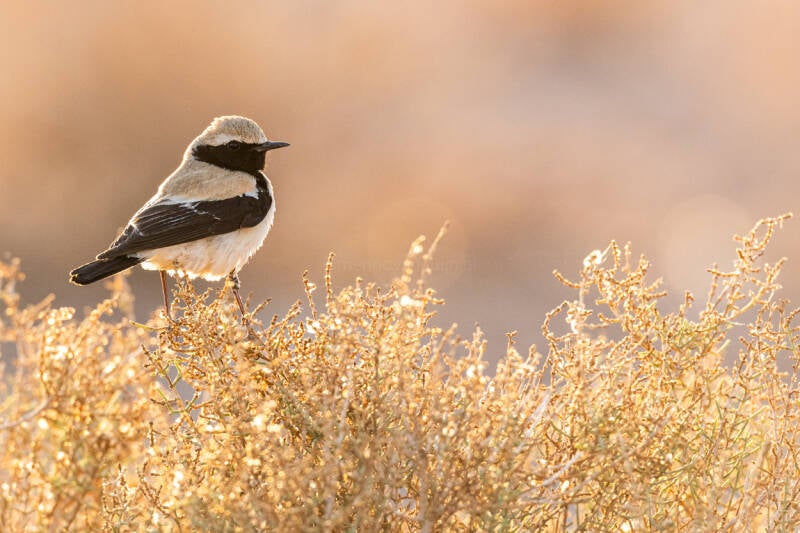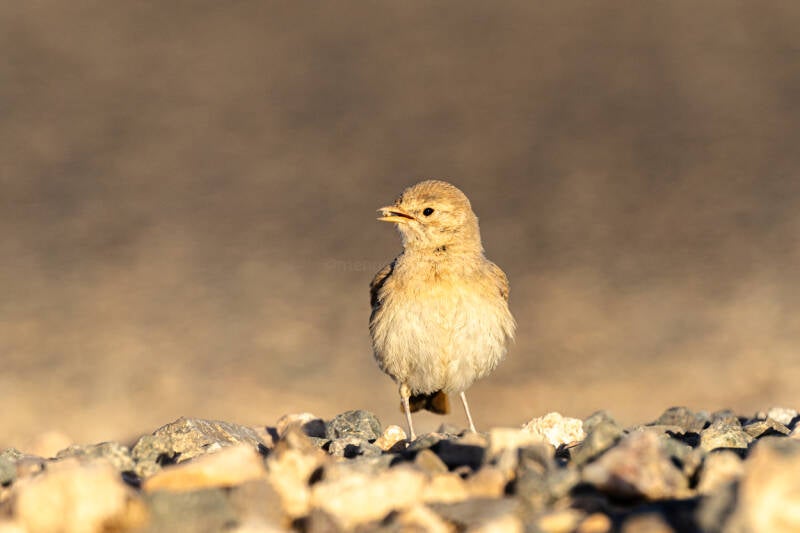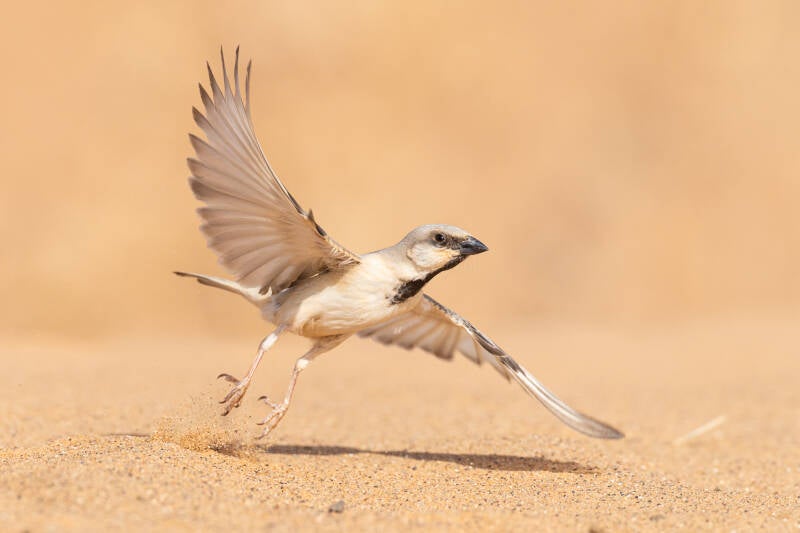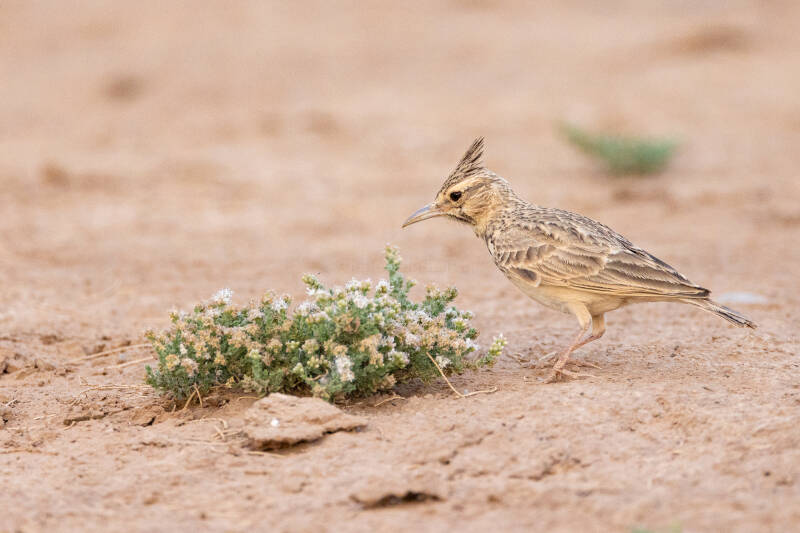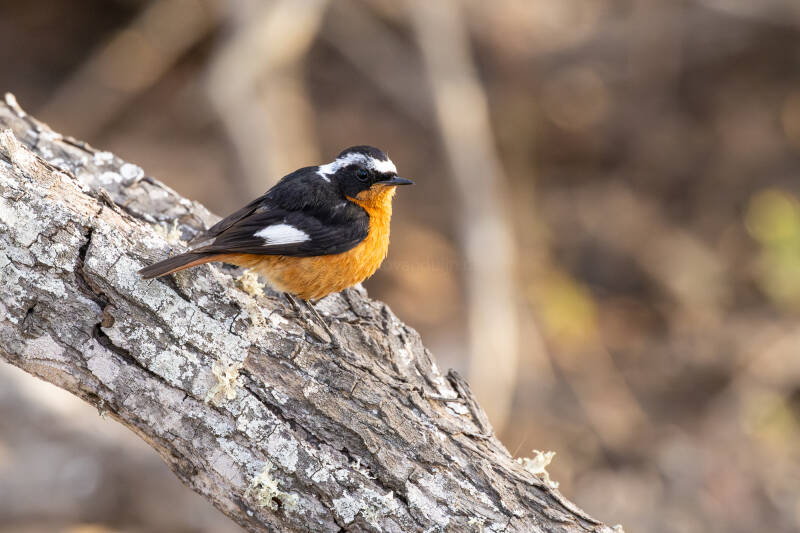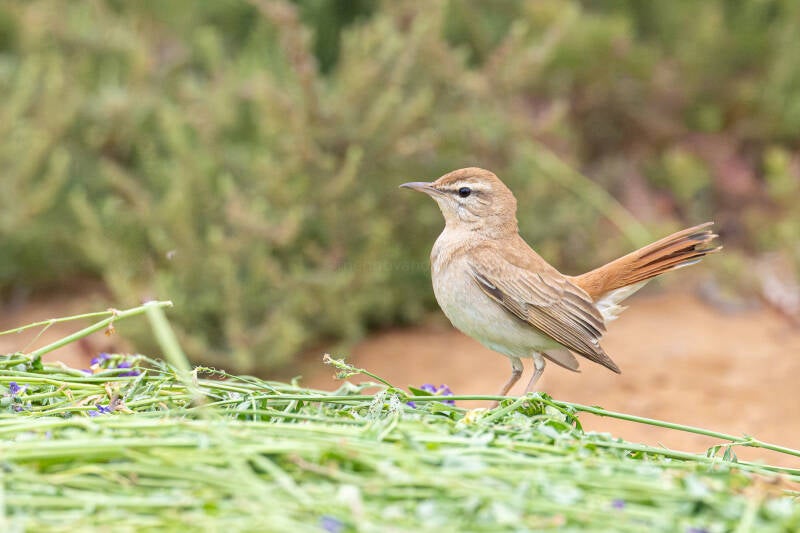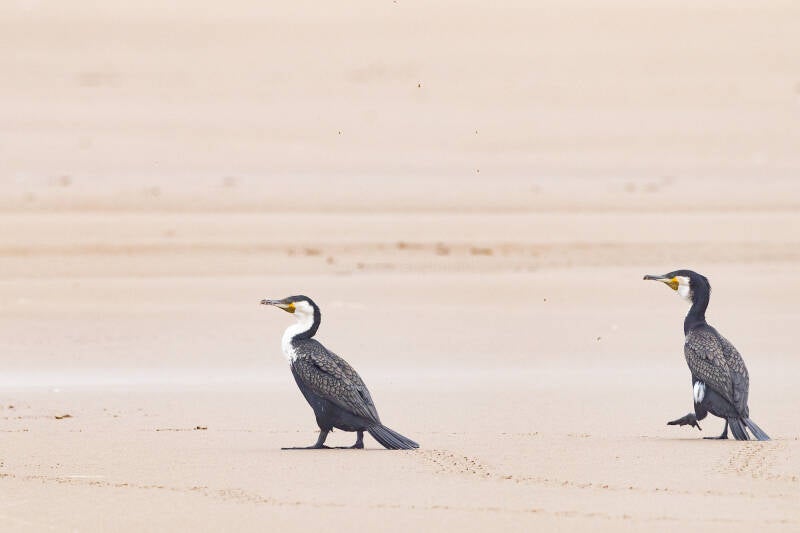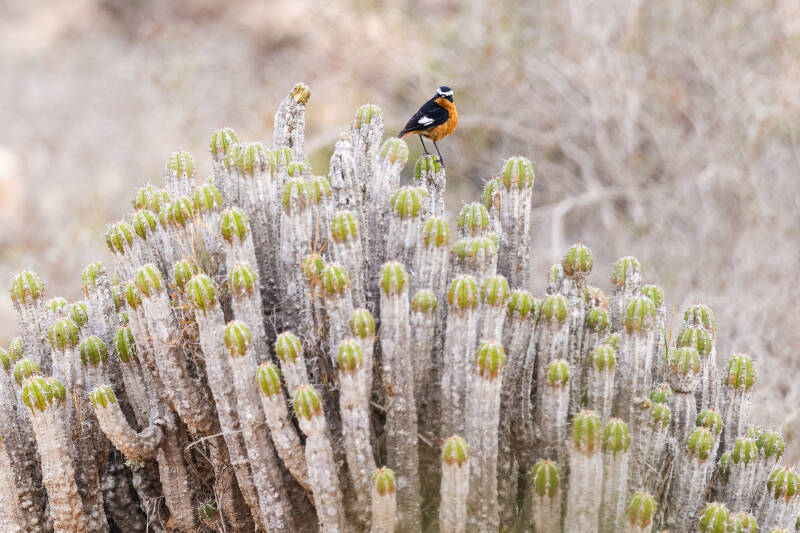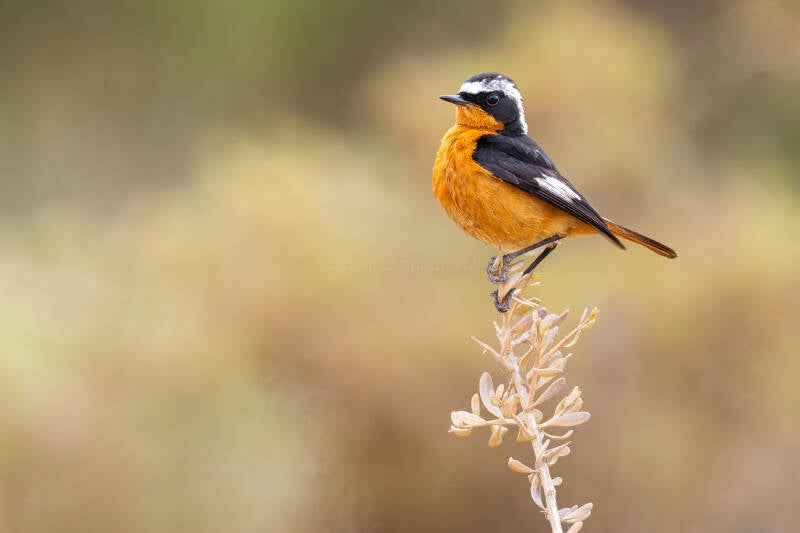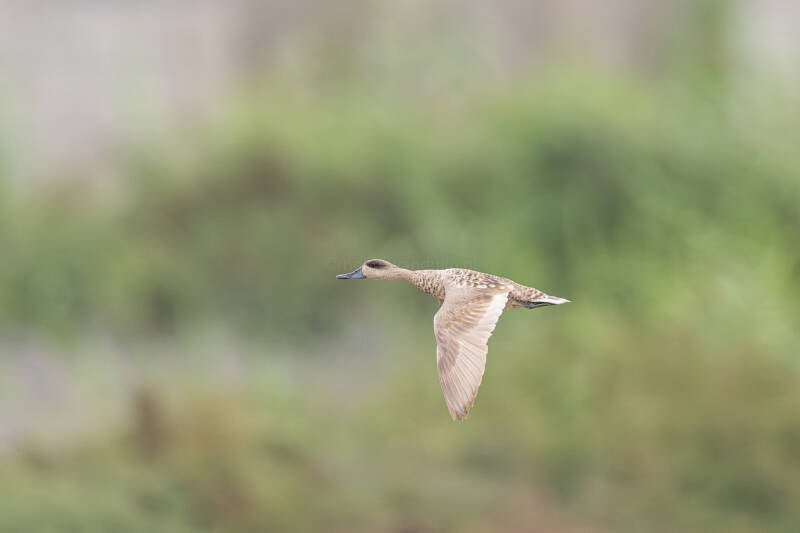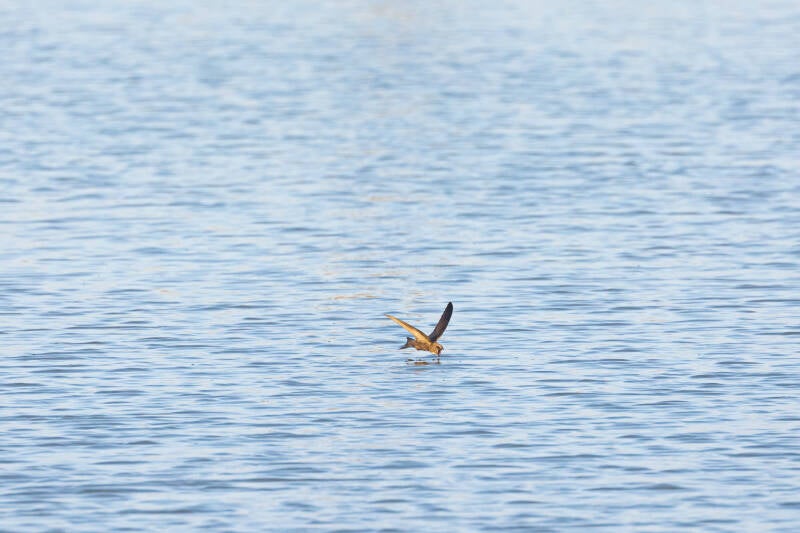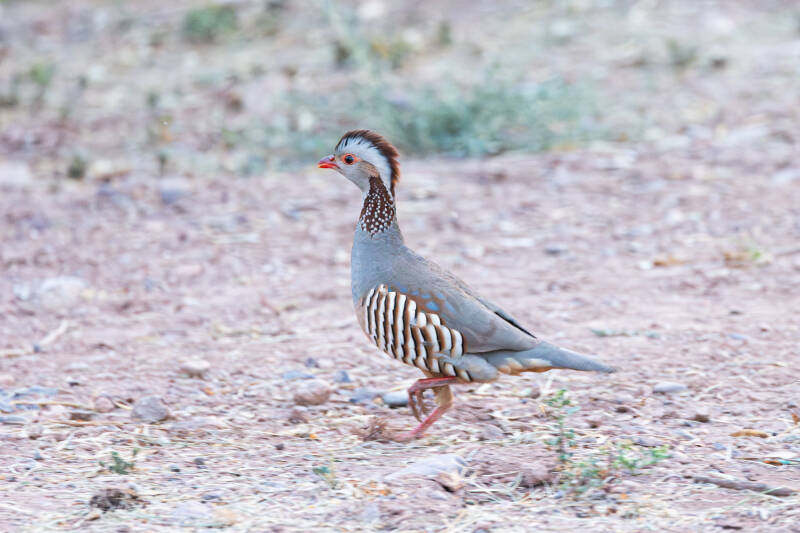Morocco 2024
From Sahara to Atlantic and the Atlas in between 03-14 May 2024
The initial idea was to go to East Turkey but that area was indicated as an “orange” zone near the borders of Syria. Therefore we chose Morocco that was also on the wish list.
The first plan was to do a full Morocco tour but that would mean daily 4-6 hour drives. Therefore we decided to concentrate on the south part.
Whilst most visit this region in March / April I was a bit afraid to dip the High Atlas species but that turned out not to be the case (see 6/5/24). Probably we missed European migrants but we had some summer breeders that otherwise are missed or hard to find.
We planned the first half ahead with the hotel bookings but after Merzouga we wanted to have several options open
1: Ouarzazate plus another day at Tagdlit (in case we missed birds) or
2: the south route, which we chose, to try for Lichtenstein’s Sandgrouse and then to Agadir
Itinerary
- Fri. 03-5
Flight Marrakech - Sat. 04-5
Marrakech - Sun. 05-5
Marrakech morning, 3h drive Oukaimeden - Mon. 06-5
Oukaimeden morning, 6h drivee Boulmane Dades - Tue. 07-5
Boulmane Dades and Tagdilt - Wed. 08-5
Boulmane Dades morning, 3,5h drive Merzouga - Thu. 09-5
Merzouga (guided tour) - Fri. 10-5
Merzouga morning, 6h drive to Tissint - Sat. 11-5
Tissint morning, 6h drive to Massa - Sun. 12-5
Massa - Mon. 13-5
Massa, 4h rive to Marrakech - Tue. 14-5
Marrakech morning, afternoon flight
Friday 3 May 2024 - Welcome to Morocco
Our flight departed from Rotterdam at 12:05 PM and after a four hour flight we landed at Marrakech (15:00 PM local time), with a Kestrel next to the landing strip as the first bird of the trip. After getting our luggage, passing the passport control we stepped out, in 40 degrees celsius, to find a cab to bring us to our accommodation.
At the parking lot an African Blue Tit was calling and the air was full with Pallid and Common Swifts. Whilst we were driving, in utter chaotic traffic, I saw my first lifer from the cab, a House Bunting.
We arrived at our accommodation, just outside the old centre of Marrakech where we first sat down for a mint tea whilst our room was made ready with House Bunting chirping above the courtyard. A shower was most welcome and we started our walk into the vivid old city.
Beside the sight seeing I saw two new lifers, some Little Swifts and Common Bulbul flew over the busy streets. We enjoyed dinner at the rooftop restaurant overlooking the old market.

Saturday 4 May 2024 - Marrakech
We chose the accommodation so I could walk out early in the morning to nearby parks for birding and spend the rest of the day in the city centre. I got out before sunrise and it was a completely different world. An orchestra of singing Blackbirds, House Buntings, Common Bulbuls, Spotless Starlings and in the parcs African Blue Tits, African Chaffinch, Greenfinch, Sardinian Warblers and one Western Olivaceous Warbler.
I first walked around the city walls where thousands of Pallid and Common Swifts were flying in and out the openings where they nested in. The fenced off parks open later in the morning so when the gate opened at 08:00 I was the first visitor and could photograph the Turtle Doves and Serins feeding on the ground.
I got back at 09:30 for breakfast that we enjoyed on the balcony even I was distracted every 5 minutes with the overflying (Little) Swifts, a Booted Eagle and an unexpected Brown-throated Martin, another lifer which I only planned to see at Oued Massa a week later.
The rest of the day we spent wandering around the city, walked over 20 kilometres, and ended with dinner in the busy market centre. On our way back to the accommodation we tried for Magreb Owls but the noises of the streets were just too loud.
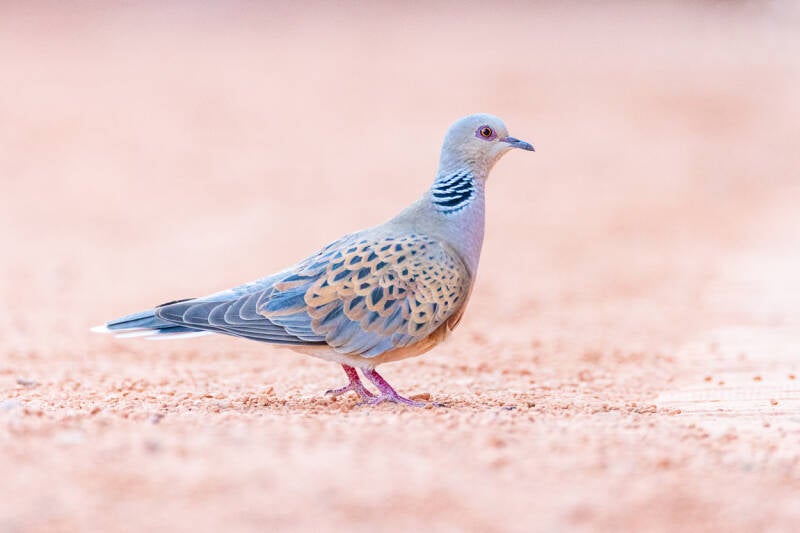

Sunday 5 May 2024 - Into the High Atlas
I woke up a bit later to recover from travelling and to be charged for the trip ahead. The plan was to photograph the swifts from the rooftop terrace and also the local House Buntings. In the morning the swifts fly lower as the insects are not that active yet allowing better changes for flight shots.
After breakfast we collected our car. This took over an hour with all the old-fashioned paperwork, completely different than two months earlier in Finland where a signature was sufficient and the company already had the car parked in front with a running engine. Welcome to Morocco 🙂
Managing our way through the hectic traffic to get out to the city as fast as possible to head to Oukaimeden. On the way we spotted several targets like Maghreb Magpie and Desert Great Grey Shrike (elegans). The stop for Tristram’s Warbler produced three singing males. In the valleys we heard several Levaillant’s Woodpecker and a male foraging on the side of the road at Parc Oukaimeden.
We arrived at the Oukaimeden dam and after waving off the local sellers, almost smashing the honey jars in our faces as a sale technique, we could focus on the birds. A pair of Grey Wagtails was foraging in the stream below (no Dippers) and a Black Wheatear was singing on top of the rocks. Whilst we walked up the hill we flushed some Atlas Horned Larks.
At the lake two pairs of Coots were nesting, fending off some stray dogs that then turned chasing the 30+ flock of Red- and Yellow-billed Chough. Saskia thought we could cross the grass vegetation along the stream and had to learn the hard way with mud-soaked sneakers.
We checked in at our Apartment (Gite Oukaimeden) and after the ceremonial welcome tea spent the late afternoon till sunset exploring the road till we couldn’t go further. That resulted in Seebohm’s and Black Wheatears, Rock Sparrows, Moussier’s Redstart, Black Redstarts, African Chaffinch and the highlight of a pair of African Crimson-winged Finches feeding on the yellow flowers on the rocky slopes.
After a very good Tajine we headed off to bed but after midnight I woke up because of the call of a Maghreb Owl! The bird kept calling for over an hour.
Monday 6 May 2024 - Up and over the High Atlas
At 07:00 I started birding at the same site of the previous day where we saw the Crimson-winged Finches. Some Woodlarks were singing overhead and a pair of Atlas Horned Lark was making a nest. Some Rock Sparrows hang around the water pipe. Whilst I was photographing the Seebom’s Wheatear, 3 Crimson-winged Finches landed on the dirt road and started to eat the yellow flowers.
Back at the ski station a Mistle Thrush was singing from the poplar trees. Around the lift it was buzzing with Rock Sparrows including some more Crimson-winged Finches that came down the slopes to drink from a dripping pipe. The mixed flock of Red- and Yellow-billed Chough were making their way through the valley.
Time to get back for breakfast but not before spending some time with the sunbathing Yellow-billed Chough on the black rocks accompanied by some Barbary Ground Squirrels.
We were on the road again in order to cross the Atlas heading to Ouarzazate. It was a scenic drive, at one stop another Tristram’s Warbler was singing. A first location for Maghreb Wheatear only produces some Desert Larks and Black-eared Wheatear. We continued our way to Boulmane Dades (skipping Ouarzazate) and while crossing a stream I noticed a Litlle Crake.
After checking in, we went out to explore the Tagdali dirt track. Directly after we left the main road and arrived at the first garbage dump a male Red-rumped Wheatear was waiting on top to welcome us accompanied by a male Western Black-eared Wheatear.
We passed by the dump with all the scattered plastics and checked out the first larger bush for a Woodchat Shrike, then two Thick-billed Larks came flying in to land right in front.
The sun was quickly getting lower so we had to rush to the dried out lake bed where 25 Black-bellied Sandgrouses were present but also a pair of Temminck’s Lark, Desert Wheatear and a displaying Greater Hoopoe Lark. What an end of the day!
Tuesday 7 May 2024 Tagdlit clean and dirt track
Another early morning as I wanted to be at the dried lake along the Tagdlit road, off the N10, at sunrise. I arrived and parked the car with the sun in my back, soon a flock of 13 Black-bellied Sandgrouse, and with them a White-bellied Sandgrouse, arrived. Early in the morning many larks were on the road before traffic and also a Bar-tailed Lark, running around like a little roadrunner.
I left the tarmac road to Tagdlit and took the dirt track back to Boulmane Dades, same species as before but the first Atlas Buzzard (B.r.cirtensis) of the trip was enjoying the morning sun.
The afternoon we drove the winding roads of Gorges de Dades, in the valley there were many Cetti’s and Olivaceous Warblers singing and on the cliffs several Blue Rock Thrushes. From the cafe on top of the Gorge we could observe some more Little Swifts foraging over the stream.
In the evening I went back to photograph the Red-rumped Wheatears and Temminck’s Larks at the dump.
Wednesday 8 May 2024 - the Owl and Falcon nest
I went out early to be at sunrise at site for Maghreb Wheatear and where previously Rock Martins had been seen, I could only find a female Maghreb Wheatear but no martins. At the first parking outside Imider I was welcomed by a pair of adult Lanner Falcons flying overhead.
A local birder/guide rushed up to me and tried to offer his services. In poor French I tried to explain I wanted to be on my own but he was persistent to come with me even though I tried telling him I didn’t have any money with me.
We walked the dry river bed where he pointed out a nesting Atlas Buzard and later the Pharaoh Owls and Lanner Falcons when walking back a male Maghreb Wheatear showed up.
Even though I could have found all on my own I remember I had some cash in the car and paid him 200 Dirham, a sandwich, and a bottle of water but he was most happy with a pack of chocolate biscuits.
We had a long drive ahead today to get to Merzouga with a stopover for Streaked Scrub Warbler. After walking in the heat for an hour we finally heard some birds calling that turned out to be a family of scrub warblers moving fast jumping from one to the next spiky bush.
Continuing our way toward Merzouga we saw another Hoopoe Lark and the first Maghreb Larks and Blue-cheeked Bee-eater flying by. After a long day of driving we arrived at our riad. After a refreshing dip in the pool we walked around the palm plantation that held many migrants like Northern Wheatear, Whinchat, Pied and Spotted Flycatcher and Willow Warbler. Many Saharan OIavicious Warblers were singing as did Laughing Doves.
Thursday 9 May 2024 - into the Sahara
Today we had planned a guided tour into the Saharan Desert with Birdwatching Morocco. Hamid picked us up at 07:00. Whilst driving to the well where the sangrouses come to drink, a Barbary Falcon flew by over the car.
At the well we first drove around. The sandgrouses land a couple of hundred metres away and, when it’s safe, they walk to the well to drink. First are the Spotted Sandgrouse to arrive followed by the Crowned Sandgrouse.
As their numbers increase with small flocks arriving they draw the attention of another Barbary Falcon that a couple of times chased these flocks without success. At some point one flock after another starts to drink and then quickly head off back into the desert.
A 4x4 is required driving the sand road and dunes in order to get to the small touareg settlements where to look for Desert Sparrow. An old lady feeds the sparrows and Hoopoe Larks providing good photo opportunities.
At an enclosure with palm and olive trees we saw our first Fulvous Babblers. Then a long search for the African Desert Warbler started, it took a while before we found one and on top, it was extremely mobile and shy.
The Egyptian Nightjar was the opposite, pointed out by the local sheppard, it was sleeping under the vegetation. Here again we tried to locate Desert Warbler but instead saw a Fennec Fox and a Horned Viper.
We finished our day at Rissane Palm Plantation with Barbary Partridges, Fulvous Babblers, Little Owl, Maghreb Larks, Rufous-tailed Scrub Robins and Blue-cheeked Bee-eater. The rest of the day we relaxed at the riad.
Friday 10 May - Saharan sunrise and into the remote south
Saskia really wanted to do a camel ride and see the sunrise from the dunes over the Sahara. So at 05:15 we stepped out into the dark where the shepherd with our dromedary was waiting. It was an interesting experience, being on the camels, in the dark and complete silence only once broken by the call of a Fennec Fox.
We stopped at the base of the dune and had to climb it ourselves, which is a good morning exercise. The Saharan landscape unfolded whilst the sky was getting brighter before the big ball of fire rose over the horizon.
Only then it turned out we were not the only ones. Some Americans arrived by Jeep to “snowboard” down the dune. And then a whole peloton of quads emerged in the distance, all breaking the silence, but luckily not our view.
Fun thing was by the time the sun was already up and soon got covered by clouds that later even produced some raindrops, these overcast conditions would remain the following days. I had an hour before breakfast to check the palm plantation next to our riad. More migrants had arrived with Common Redstarts, Whitethroats, Willow Warblers and Yellow Wagtails in the gardens.
We had planned to head to the coast (total of 12 hours driving) from here only had two options, same road via Ouarzazate or south to Tissint for the only known site for Lichtenstein’s Sandgrouse. We chose the latter.
Hamid was kind enough to share a good stopover for migrants and Blue-cheeked Bee-eaters on the way at Alnif where we also had an interesting lunch break at the restaurant/fossil museum owned by Mohammed and his brother. We got a private tour and had to have our photos taken with each and every fossil :)
Still we had to cover three hours of driving through what turns out to be the remotest parts of Morocco and where you come across not more than three cars per hour. We arrived at the drinking site but unlike the other grouses the Lichtenstein’s Sandgrouse only comes to drink after sunset.
So we sat down and waited. The sun slid down behind the mountains but that was the signal for mosquitos to discourage us. It got darker and darker and the assault of mosquitos continued till the point we almost gave up but suddenly heard distant calls.
We could hear at least two birds on our left but in the poor light could hardly see anything. Suddenly in front of us sat a Sandgrouse at the river pools, we could see the silhouet but couldn’t distinguish a lighter breast band so this was a female. But as secretly as they arrived they suddenly left into the darkness of the night.
Saturday 11 May 2024 - The long road to the coast
As not many tourists come down here we were the attraction of the village. The evening before, the owner of the restaurant was so proud he set-up a table on the street so everybody could see the tourist area at his restaurant. And the next morning after breakfast the hotel owner showed us around his house and insisted we take pictures of it.
In the early morning I headed out to the river behind Tissint, the water level was low so there wasn’t much of the famous waterfalls left. Whilst I walked to the palm plantations my attention was drawn by a familiar call. In the dry river bed was a flock of Sandgrouses that turned out to be a mix of Spotted and Crowned Sandgrouses.
A local on a Donkey was heading into the direction of the group but surprisingly they didn’t fly off. So I also tried to get close without disturbing the birds that needed their morning drink. I waited till they approached the water and positioned myself in the flyway, I hoped. This turned out for the good as the birds flew by over the river at eye level.
I headed back to the accommodation and was greeted by the locals. I showed the photos and some knew the birds that came to drink but others were surprised that such beautiful birds were just outside their village. I had to decline a lot of invites for tea at their houses in order to make it in time for breakfast with Saskia.
We said our farewells to the kind hotel owner and headed west, still we had to drive 6 hours. In order to track our route I logged the birds we came across, the bulk being Desert Larks and White-crowned Wheatears but we also did see some Marsh Harriers, Woodchat Shrike and Desert Great Grey Shrikes.
As we left the Anti-Atlas behind the traffic got busier and busier, especially around Agadir. The overloaded old trucks accidents increased, either broke down (losing all parts on the road) or losing their cargo, like one tomato overloaded truck that took a sharp turn at a roundabout, blocking the road causing four lanes merging into one, with frustrated drivers, and police and ambulances trying to push their way through, madness!
We did see more accidents in the 20 minutes near the centre of Agadir than the whole trip before. We knew we had to get out there fast, confirming that the Agadir centre visit is off the plans. Finally we got to our destination but not before struggling though the sand tracks with no indications and google maps being unhelpful. It was a lovely place with the Northern Bald Ibises flying by, overlooking the ocean from the terrace. We were all zen again.
Sunday 12 May 2024 Souss-Massa
As we still had overcast conditions I could sleep in a bit and arrived at 7:30 at the bridge Sidi Oussa. Once I stepped out of the car I was overloaded with songs of Zitting Cisticolas, Sardinian Warblers, Crested Larks, (White-throated) Yellow Wagtails, Rufous-tailed Robins etc.
When just scanning the river my attention was drawn by a pair of Marbled Ducks. On the other banks were Black-winged Stilts, Little Egrets and Eurasian Spoonbills. Then the clear song of the Black-crowned Tchagra echoed over the water. The bird was singing from the top of a dead bush and underneath the cultivated field was swarming with Yellow Wagtails, Sardinian Warbler, Crested Larks and a cooperative Rufous-tailed Scrub Robin.
The road to the visitor centre produced some Serins, Cirl Buntings and the only Corn Bunting. In the river about 20 Greater Flamingo were foraging accompanied by some Grey Herons and Little Egrets. But at the visitor centre itself it was busy with runners, people doing yoga and all other kinds of activities.
On the coastal road back a mixed flock of mainly immature gulls were resting, majority being Lesser-black Backed and Yellow-legged Gulls but also some Audouin's Gulls.
Don’t trust Google Maps on these (sand) roads if you don’t have a 4x4, plus the road west of the visitor centre is closed off for traffic! With our Dacia Duster we thought we could make it, at least down the sand road went fine but I was already squeezing it to go back up.
Still at the parking near the beach we scanned the coast line and quickly found a flock of resting terns. Most of them were Sandwich but also some Common and 13 Lesser Crested Terns. Next to them stood 4 Great Cormorants out of 2 were the white-breasted subspecies “ morrocanus”. I didn’t pay too much attention to the flock of gulls but did note a larger individual I quickly took for a Greater Black-backed. I first focussed on the terns and cormorants to take photos off and would then scan the flock of gulls. Foolish of me as the flock took off and the larger gull was no longer to be found. Either way a Greater Black-backed turned out to be rare but I completely forgot about the possibility of Cape Gull…..
Now we had to go back, the local warden came by with his bike and advised us to try to go the same way back up… would we make it? “Inshallah” he replied, driving off on his motorbike. Ok, full gas up and hope for the best. It went good and we thought we’d made it but then at the last steep part, just before the end we got stuck.
Did Allah abandon us, no! A helpful camel shepard came to the rescue and tried to push and ease the road, putting the spiky vegetation on the track with his bare hand. Still we got stuck. Then two bikes came down and on one of them was the local retired warden, he would get us out. All of us were now putting branches on the track and shovelling the sand out of the way. Here he came, full gas, and when he got slowed down we jumped behind and pushed. This we had to repeat over three times but finally we got the car up on hard soil. Yesss, high fives, big hugs and we donated some bottles of water and paid them each for their help. Meanwhile a Little Owl observed it all from his pile of stones.
We had to recover a bit from this adventure and whilst having lunch spent some time scanning the ocean for seabirds. Only gulls and some cormorants flew by plus a single adult Gannet but that was it.
Again I was restless but Saskia stayed in the accommodation to do some reading. I headed out again towards the filtration plant. Here I found 46 Northern Bald Ibises resting and preening. In the air many Thekla and Greater Short-toed Larks were singing and a Marsh Harrier and two Brown-throated Martins flew by.
This afternoon we stayed on the safe side and visited the visitor’s centre via the tarmac road. It was quite busy with people but at the entrance a Moussier's Redstart and Black-crowned Tcharga showed well. We walked west scanning the river regularly for waders which resulted in some Dunlin and a Little Stint, more Flamingo, Ruddy Shelduck and a Spotted Crake started calling.
We headed up the hill toward sunset to try to find Cream-coloured Courser but could only find some Thekla Larks and a pair of Subalpine Warbler. Driving in the dark is even crazier, the roads are used by all kinds of cars, trucks, motors, scooters and cyclists, some with lights but mostly not, last also use the middle of the road, no lights and kids on the back, in Europe we think one has a death-wish.
Monday 13 May 2024 From Oued Massa back to Marrakech
After missing the Cream-coloured Courser I headed back toward Oued Massa, after passing Sidi R’Bat I scanned the stoney plateau on top of the hill and found a courser. In Dutch they are called “run bird” and this confirmed the naming.
I got my lens out but then lost the bird, I scanned the area and it was running over 200m away so I just took a record shot, not trying to get closer as the bird easily would outrun me.
As I turned into the road of the visitor centre a Stone Curlew was standing close to the road and next to it a Moussier’s Redstart on top of a cactus. At the visitor centre I spent some time photographing Magreb Magpie and a Moussier’s Redstart.
A quick stop on the way back at the bridge produced Brown-throated Sand Martins and a flyby of a Marbled Duck.
After breakfast we checked out and headed to the river Oued Sous, south of Agadir. The river was rich with birdlife but the banks were covered with dead fish indicating a toxic spill/dump.
Gull-billed Terns were patrolling the river skipping up shrimps, a roost of terns was opposite the parking lot, mostly Sandwich but some Common, Lesser Crested and Little Terns among them. The muddy shores held many waders. The majority being Common
Ringed and some Grey Plover, Dunlin, Sanderling, some Red Knot, a pair of Bar-tailed Godwit and a single Greenshank, Whimbrel and Curlew.
The target was Moroccan Wagtail but all efforts to find them here were in vain. A single Slender-billed Gull was the last addition to the Moroccan trip list before we left towards Marrakech.
Half way we paused by the lake “Barrage Abdelmoumem” hoping for a nice surprise but the lake only held some Eurasian Coots, Common Sandpiper and Thekla Larks, other wildlife was more abundant with many Dragonflies and colourful Bibron’s Agame Lizard.
The rest of the trip was pure driving into Marrakech with the regular sight of Common Kestrel and Ravens along the road. We booked a hotel close to the Menara Gardens and recovered from the day’s travelling.
Tuesday 14 May 2024 last day in Morocco
This last morning I headed out to the Menara Gardens before sunrise but the main gate was closed and a sign in Arabic and French indicated it would only open around 8:30. On maps I saw there was a south entrance so I gave that a try. This gate was closed but not locked, the warden probably was still sleeping so I walked in quitly.
I flushed a pair of Barbary Partridges and was able to take some shots of them running over the road. Only some gardeners were in the garden, who gave me a surprised look when passing by whilst I was heading toward the centre lake where swifts come down to drink.
Two gardeners asked me how I came in so I explained I passed the southern gate which was open. I positioned myself at the lake where the swifts were swooping down to take a sip whilst flying low over the surface.
After 20 minutes the manager came toward my direction, yelling and waving. I was not allowed to take photos or be there. In a calm way I told him I entered the park from the south gate and could walk in without being stopped or a sign telling me I couldn’t get in. Still he instructed me to leave so I did, having seen and photographed where I came for already.
The main gate was still closed and I had to wait 5 minutes because he only opens the gate at exactly 8.30. Meanwhile he called the local policemen from the street corner. Who again I had to tell him the story, that I wasn’t a journalist and showed him the photos of the drinking swifts to have him on my side, which worked. I could understand he told off the manager he should have taken care I couldn’t get in at all, who then outed his frustration to the gardeners and me walking out with a big smile.
Then back to the hotel, a bad continental breakfast (compared to the good local breakfast we had before), dropping off the rental car (luckily they didn’t notice the bumper I had to push back after the bumpy sand roads) and to the airport. Check in and customs went smoothly with no long queues we heard from other tourists during the trip. Whilst we waited for the flight we were accompanied by a House Bunting singing inside the air-conditioned terminal. “Shukran, Morocco”, it was a very nice and recommendable experience.
Species List
- Ruddy Shelduck - 2 at Oued Massa
- Mallard - couple at Oued Massa
- Barbary Partridge* - 2 Marrakech and palm cultivation Rissani
- Egyptian Nightjar * - Saharan Desert near Merzouga
- Common Swift - common at Marrakech
- Pallid Swift - common at Marrakech
- Little Swift* - ~30+ seen around Marrakech
- Pin-tailed Sandgrouse - 1 at B-b flock Tagdlit
- Black-bellied Sandgrouse - several flocks at Tagdlit
- Spotted Sandgrouse* - drinking at Merzouga and Tissint
- Crowned Sandgrouse* - drinking at Merzouga and Tissint
- Lichtenstein Sandgrouse* - 3 drinking at Tissint
- Rock Dove - individuals around Boulmane Dades fitting charactarts
- Wood Pigeon - fairly common around Marrakech and foothills High Atlas
- Collared Dove (+African?) - common in urban, possible Africans at Tissint
- Turtle Dove - surprising fairly common in parks
- Laughing Dove - In palm plantations Merzouga
- Spotted Crake - calling at Oued Massa
- Little Crake- female near Boumane Dades
- Eurasian Coot - pairs at Oukaimeden and other larger lakes
- Common Moorhen - Oued Massa
- Greater Flamingo - ~20 Oued Massa
- Stone Curlew - several individuals in coastal arid areas
- Oystercatcher (longipennis?) - Oued Sous
- Grey Plover - Oued Sous
- Ringed Plover - Oued Sous
- Little Ringed Plover - Oued Sous
- Kentish Plover - Oued Sous and Massa
- Whimbrel - 1 Oued Sous
- Curlew (orientalis?) - 2 Oued Sous
- Bar-tailed Godwit - 1 Oued Sous
- Red Knot - 4 Oued Sous
- Sanderling - Oued Sous
- Dunlin - Oued Sous
- Little Stint - 1 Oued Sous
- Common Sandpiper - Oued Sous and Massa
- Redshank - Oued Sous and Massa
- Greenshank - 1 Oued Sous
- Cream-colored Courser - 1 Oued Massa hill
- Slender-billed Gull - 1 Oued Sous
- Black-headed Gull - Oued Sous and Massa
- Audouin's Gull - dozen resting at Sidi R'bat
- Yellow-legged Gull - common along coast
- Lesser Black-backed Gull - common along coast
- Gull-billed Tern - 8 Oued Sous
- Sandwich Tern - flocks along banks/beach Oued Sous and Massa
- Lesser Crested Tern - 12 at beach Sidi R'bat
- Little Tern - several at Oued Sous
- Common Tern- several at Oued Sous
- White Stork - present around settlements and dumps
- Northern Gannet - 1 migrating Sidi R'bat
- Great Cormorant (carbo + maroccanus) - 2 carbo and 3 maroccanus Sidi R'bat
- Northern Bald Ibis* - regular around Sidi R'bat flock resting at power plant
- Eurasian Spoonbill - several at Oued Sous and Massa
- Cattle Egret - several at various locations
- Grey Heron - several at Oued Sous and Massa
- Little Egret - several at Oued Sous and Massa
- Honey Buzzard - 1 migration west of Merzouga
- Booted Eagle - 2 over Marrakech
- Marsh Harrier - birds on migration at several locations
- Black Kite - birds on migration at several locations
- Long-legged Buzzard (Buteo buteo cirtensis) - seen at Tagdlit
- Little Owl - 1 Rissane palm plantation and several near Sidi R'bat
- Pharaoh Owl* - family at Imider
- Maghreb Owl* - calling at Oukaimeden
- Hoopoe - several seen in lower parts
- Blue-cheeked Bee-eater* - flocks at Merzouga and Rissane
- European Bee-eater - several on migration
- Levaillant's Woodpecker* - several calling and seen road to Oukaimeden
- Common Kestrel - fairly common
- Lanner Falcon* - family at Imider
- Peregrine Falcon (barbatus) - hunting individuals around Merzouga
- Black-crowned Tchagra* - total of four at Oued Massa
- Great Grey Shrike (algeriensis) - several seen in lower regions
- Woodchat Shrike - migrants seen at several locations
- Maghreb Magpie - fairly common in lowland around settlements, especially at the coast
- Red-billed Chough - flock at Oukaimeden
- Yellow-billed Chough- flock at Oukaimeden
- Brown-necked Raven - flocks at Merzouga
- Northern Raven - several in Atlas mountains
- Coal Tit - birds in juniper and pines up to Oukaimeden
- African Blue Tit - several in Marrakech and Oukaimeden
- Great Tit - several at Marrakech and along the coast
- Greater Hoopoe-Lark* - Tagdlit and Merzouga
- Thick-billed Lark* - pair at Tagdlit
- Desert Lark* - common in desert mountains
- Bar-tailed Lark* - 5-6 birds seen at Tagdlit and 2-3 Merzouga
- Woodlark - singing birds at Oukaimeden
- Thekla's Lark - common
- Maghreb Lark* - common around Merzouga and Rissane's palm plantations
- (Atlas) Horned Lark - fairly common at slopes Oukaimeden
- Temminck's Lark* - several at Tagdlit
- Greater Short-toed Lark - several in sandy coastal areas
- Common Bulbul* - common in urban areas
- Sand Martin - flocks on migration near rivers
- Brown-throated Martin* - 1 over Marrakech and 3 Oued Massa
- Barn Swallow - common
- House Martin - common
- Crag Martin - 1 over Oukaimeden en small flock down the road
- Red-rumped Swallow - couple of individuals on migration
- Cetti's Warbler - common along overgrown rivers
- Streaked Scrub Warbler* - family group north of Tinedjad
- Willow Warbler - birds on migration at several locations
- Common Reed Warbler birds on migration at several locations
- Saharan Olivaceous Warbler* - singing birds at Merzouga, Tissint and Rissane
- Western Olivaceous Warbler* - birds on migration at several locations and singing in coastal areas
- Melodious Warbler - Several seen on migration Tagdlit, Boulmane Dades, Merzouga
- Savi's Warbler - 1 on migration at Merzouga / Saharan desert
- Zitting Cisticola (frequently seen along the coastal areas in cultivations and grassland)
- African Desert Warbler - 1 in Saharan Desert at Merzouga
- Tristram's Wabler* - singing on suitable habitat at high atlas, low vegetation and on hillsides with some juniper trees
- Sardinian Warbler - common at coastal region but also parks in Marrakech
- Western Subalpine Warbler - lower parts of high atlas and vegetated hills in coastal area
- Common Whitethroat - migrants at Merzouga in palms/gardens
- Fulvous Babbler - in palm plantations and gardens in Merzouga and Imiter
- Common Firecrest - 2 singing at park Oukaimeden
- Eurasian Wren - along Oukaimeden road near lower settlements in the valley
- Spotless Starling - common in Marrakech and near villages in lowland
- Mistle Thrush - singing at Oukaimeden
- Common Blackbird - common in inhabitat areas in lowland
- Rufous-tailed Scrub Robin - several at Imiter, Merzouga and more common along the coast in vegetated areas.
- Spotted Flycatcher - birds on migration on several days
- European Robin - along Oukaimeden road near lower settlements in the valley
- Common Nightingale - singing individuals in Atlas lower valleys
- European Pied Flycatcher - migrants in Merzouga palm plantations
- Black Redstart - several at Oukaimeden
- Moussiers's Redstart* - Oukaimeden and Oued Massa
- Blue Rock Thrush - Boulmane Dades cliffs
- Whinchat - 1 at Merzouga palm plantation
- Stonechat - family groups at Oued Massa
- Northern Wheatear - migants at Merzouga and coastal areas
- Seebohm's Wheatear* - common at Oukaimeden
- Desert Wheatear - several Tagdlit
- Maghreb Wheater* - male at Imider Falcon Nest and female at Ouaklim Black Vulcano
- Western Black-eared Wheatear - Tagdlit
- Red-rumped Wheatear* - Tagdlit
- White-crowned Wheatear* - common in desert and Anti-Atlas
- Black Wheatear* - Oukaimeden and Imider
- Rock Sparrow - common at Oukaimeden
- House Sparrow - common un urban areas
- Desert Sparrow* - Saharan settlement at Merzouga
- Western Yellow Wagtail - blue- and grey-headed on migration at Merzouga, white-throated breeding at Oued Massa
- Grey Wagtail - couple at Oukaimeden down stream of the dam
- African Chaffinch - common in gardens and parks
- Hawfinch - individuals calling at valley to Oukaimeden
- African Crimson-winged Finch* - Oukaimeden about dozen seen early morning near ski lift and parking
- Greenfinch - fairly common in urban areas
- Common Linnet - seen at Tagdlit and coastal arid areas
- European Goldfinch - seen in Marrakech and coastal (urban) areas
- European Serin - fairly common in areas with pines and juniper
- Corn Bunting - only one singing at Oued Massa
- Cirl Bunting - several singing males Oued Massa
- House Bunting* - common around settlements
*bold = lifer
Mammals: Fennec Fox, Desert Long-eared Bat, Barbary Ground Squirrel, Fat Sand Rat, Algerian Hedgehog & Jerboa (roadkill), Dromedary (domestic)





